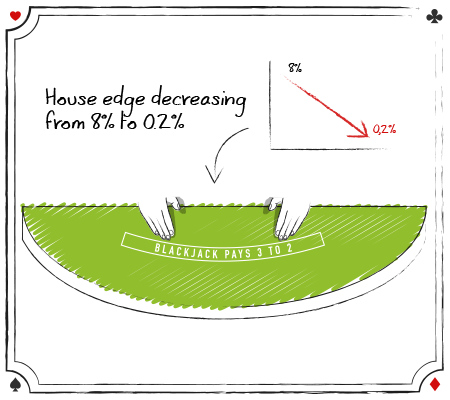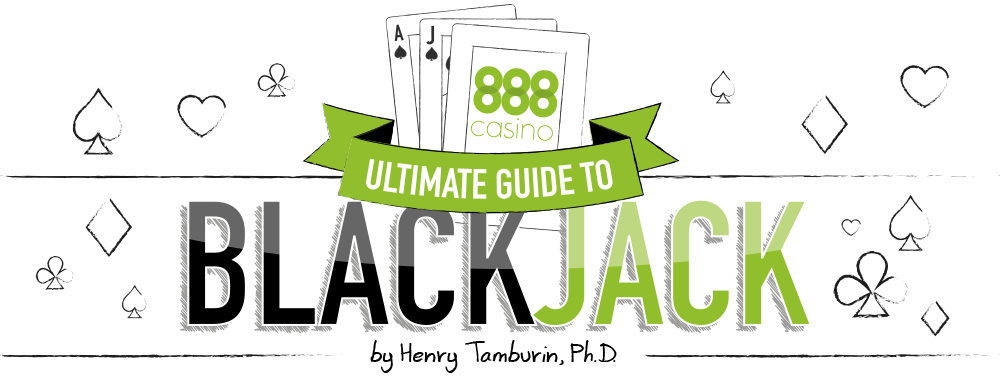
HOW TO PLAY BLACKJACK

THE BASIC RULES WHEN PLAYING BLACKJACK: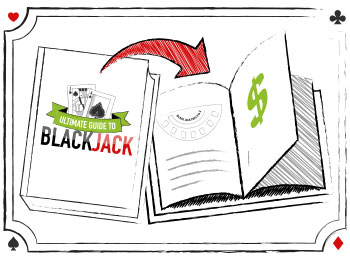
- Blackjack starts with players making bets.
- Dealer deals 2 cards to the players and two to himself (1 card face up, the other face down).
- Players must decide whether to stand, hit, surrender, double down, or split.
- The dealer acts last and must hit on 16 or less and stand on 17 through 21.
- Players win when their hand totals higher than dealer’s hand, or they have 21 or less when the dealer busts (i.e., exceeds 21).

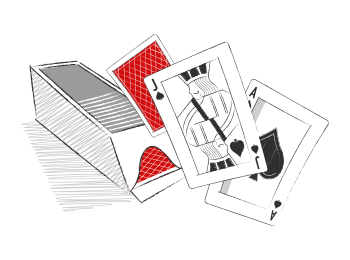
GETTING STARTED WITH BLACKJACK
In this opening chapter, you’ll learn about:
The history of blackjack, specifically its origins, how “21” became “blackjack,” and who the pioneers were that developed the first basic playing strategy for blackjack. Why blackjack is “different” from other casino games and how we can exploit this difference; and how the casino enjoys a built-in advantage over players and what we can do about it.

Before you can begin to learn how to play blackjack, you’ve got to get the lay of the land (so to speak) on how the game is played - specifically the basic blackjack rules, the objective of the game, and a few protocols to know when you are playing.
BLACKJACK RULES
I often shake my head in disgust when I pick up a brochure that you will usually find somewhere in a casino that explains “How to Play Blackjack.” Invariably it will state that the objective of blackjack is to get as close to 21 as possible. Wrong!
The objective of blackjack is: to beat the dealer’s hand by either
2) by not going over 21 when the dealer does.

CARD VALUES
All cards count their face value in blackjack. Picture cards count as 10 and the ace can count as either 1 or 11. Card suits have no meaning in blackjack. The total of any hand is the sum of the card values in the hand. A hand containing a 4-5-8 totals 17. Another containing a queen-5 totals 15. It is always assumed that the ace counts as 11 unless so doing would make your hand total exceed 21, in which case the ace reverts to a value of 1.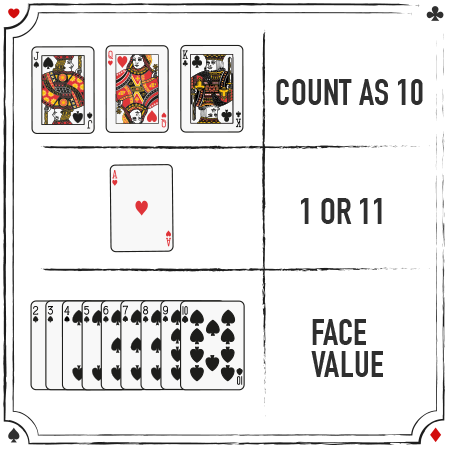
BUSTING
When a player or dealer’s hand exceeds a total of 21, this is known as busting. (Sometimes the term “break” is used when the dealer’s hand exceeds 21.) So if a player was dealt a 10-6, drew one more card which was a 9, the player busted (i.e., because his hand totaled 25).
HARD VS SOFT HAND
A hard hand is any hand that either does not contain an ace, of if it does, counts the ace as 1. For example, 10-8 is a hard 18; 5-A-10-2 is a hard 18. Any hand that contains an ace that counts as 11 is known as a soft hand. For example A-5 is a soft 16; A-2-5 is a soft 18; and 3-2-A-3 is a soft 19. When you receive your first two cards and one of them is an ace, count the ace as 11. Often when you are dealt a soft hand and draw more cards your hand will convert to a hard hand. For example, suppose a player is dealt a 5-A which is a soft 16, and he draws another card. Suppose the draw card was a 6. The player now has a hard 12 (i.e., you can never bust when you draw to a soft hand). The reason you need to know the difference between a hard and soft hand in blackjack is because the playing strategy is often different even though the total of the hand is the same. For example, a 10-6 (hard 16) is played differently than an A-5 (soft 16).

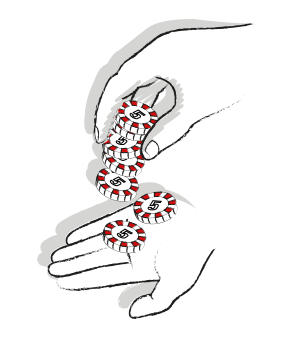 BLACKJACK BETTING RULES
BLACKJACK BETTING RULES
Blackjack is played on a semi-circular table covered with a felt cloth that usually seats up to a maximum of 7 players. There will be circle, or sometimes a square box, known as the betting spot, in front of each player in which the wager, using casino chips, is placed. A trained casino dealer is responsible for dealing the cards by strict casino protocols, collecting losing player bets, paying off winning bets, and generally keeping the game moving along at an acceptable pace.
In most casinos, cash is not used to make bets. You must use casino chips or “checks.” To purchase chips, simply take a seat at any blackjack table, wait until the dealer completes the current round, then place your cash on the table in front of the dealer and ask the dealer for chips. The dealer will convert your cash into chips and slide the chips toward you. Be sure to place the chips neatly stacked in front of you. Most casinos allow players to play more than one hand per round, assuming there are empty spots on the table. If a player does this, he must make a wager in each betting spot that he wishes to receive a hand. In most casinos, a player is required to wager double the table minimum on each hand when playing more than one hand.
CHIP VALUE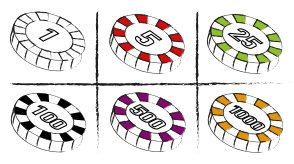
In most casinos, chips are color coded to signify their denomination although usually the value is imprinted on the chip, as well. For example, a white chip usually signifies $1 denomination, red is $5, green is $25, black is $100, purple is $500, and orange is $1,000.
In casino jargon, $5 red chips are often referred to as “nickels,” $25 green chips as “quarters,” $100 black chips as “blacks,” $500 purple chips as “Barneys,” and $1,000 orange chips as “pumpkins.”

NUMBER OF DECKS OF CARDS
Every table should have signage that specifies what the minimum and maximum betting limits are. For example, if a table has a minimum bet of $25 you are not allowed to say bet a red ($5) chip; your minimum bet must be $25. So before you sit down to play, be sure to check the betting limits posted on the table.
Prior to the deal of the cards, all players must make a bet by placing chips in their respective betting boxes. Every player and the dealer will receive two cards. One of the dealer’s cards (known as the dealer’s upcard) is always dealt face up so that players can see its value. The other dealer’s card, known as the dealer’s downcard or hole card, is unseen. The two player cards can be dealt either face up, or face down.
In general, in games that are dealt from a dealing shoe (normally containing 4, 6 or 8 decks of cards) the players’ cards are dealt face up. In this case you should not handle the cards. In games in which the dealer deals from the hand by pitching the cards to the players (single- or double-deck games), the player cards are usually dealt both face down. In these games it is permissible for the player to handle the cards with one hand only, and the cards must always be above the table.
After the player looks at his initial two cards and sees the value of one of the dealer’s two cards, the player must make a playing decision.
THIS INCLUDES THE FOLLOWING PLAYING OPTIONS:
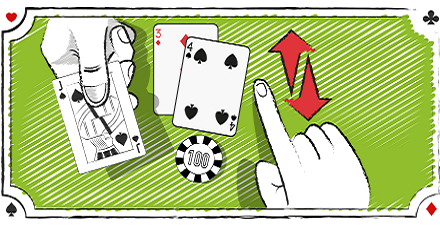
HITTING RULES
PAIR SPLITTING RULES
If you have two like cards (e.g., a pair of 6s or aces), you could exercise the option to split them. When you split, you must make another bet equal to your original bet, just place your chip next to the original chip bet on the hand. When you pair split, you are playing each card as a separate hand and you can draw as many cards as you like to each hand, except split aces; most casinos will allow only one draw card to each ace. For example, if you were dealt a pair of 8s, and split, you would have two separate hands with a count of 8 in each hand. You are required to play out one of the split hands (on your right) first to completion before the other. In shoe games, you indicate that you want to split by placing another chip next to the original chip. For hand-held games, toss the two cards you want to split face up on the layout and then make the secondary wager. Most casinos will also allow players to split any 10-value cards such as a jack-ten or queen-king, although, as you will soon learn about pair splitting, this is not a recommended playing strategy.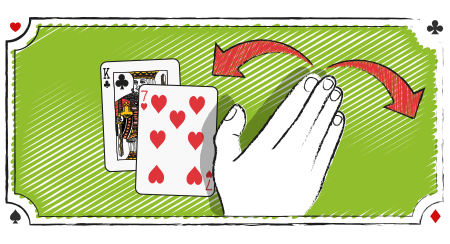
STANDING RULES
This means you are satisfied with the total of the hand and want to stand with the cards you have. In shoe games, indicate that you want to stand by waving your hand over the cards, palm down. In hand-held games, tuck your cards under the chips that you have in the betting box.
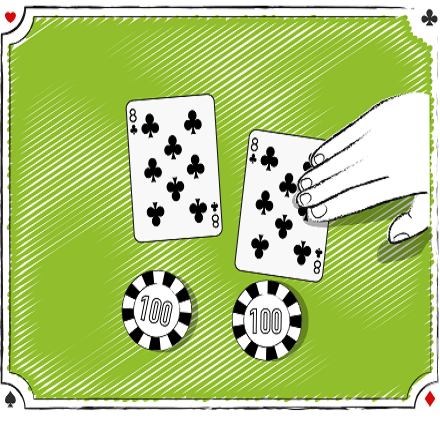
DOUBLING DOWN RULES
This playing option allows you to double your initial bet in return for receiving one (and only one) draw card. In most casinos, you can only double down after you receive your first two cards and before drawing another card. To signal the dealer that you want to double down in shoe-dealt games, just place your chip next to the original chip bet on the hand. In hand-held games, toss your cards on the table face-up and then make the secondary bet.
Casinos will allow you to double down for less than your original wager, but as you’ll learn here, that is not a good bet.
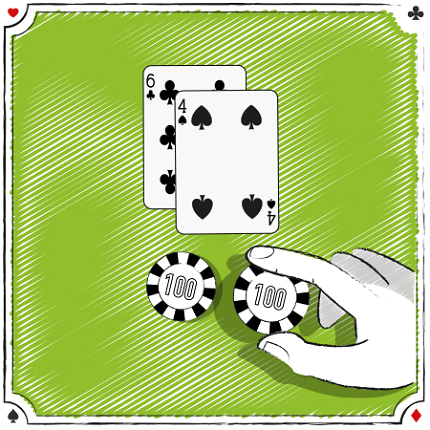
SURRENDER RULES
This playing option is sometimes permitted. It allows a player to forfeit the hand immediately with an automatic loss of half the original bet. In most venues, players can surrender their initial two-card hand only after the dealer has checked his cards and ascertained that he doesn’t have a blackjack (known as late surrender). Once a player draws a card, the surrender option is no longer available. If the dealer has a blackjack hand, then surrender is not available.
If you want to surrender your hand, just say to the dealer “surrender.” In some casinos a hand signal must be given for surrender which is to draw an imaginary line across the felt layout from left to right with your finger. When a player surrenders his hand, the dealer will remove the player’s card from the table and place one half of the player’s bet in the chip rack. The player is no longer involved in that round. Another type of surrender is sometimes offered and it is known as early surrender. Here players can surrender their hand before the dealer checks her hole card for a blackjack. Early surrender is a more favorable player option than late surrender. Here you can read more about it.
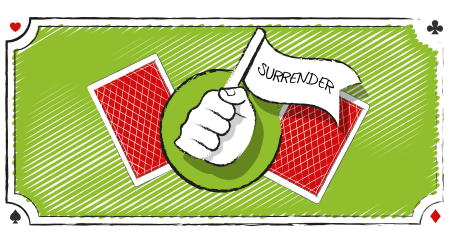

INSURANCE
When the dealer’s upcard is an ace, she will ask players if they want to make the insurance wager, which is a side bet in which players are betting that the dealer’s hole card will be a ten-value card. Players can make an insurance bet less than or equal to one-half of the initial bet made on the hand. To make the insurance bet, simply place your chips on the insurance line, which is located right above the player’s betting spot. You win your insurance bet if the dealer has a ten-value card in the hole. A winning insurance bet pays off at 2 to 1 odds.EVEN MONEY
When the player has a blackjack hand and the dealer has an ace showing, the dealer will ask the player if he wants “even money.” Even money means the dealer will automatically give you a 1 to 1 (or even money) payoff on your bet before she checks her downcard for a potential blackjack. Taking even money yields the same result as making an insurance bet on your blackjack hand.
DEALER’S PLAYING RULES
Unlike players, the dealer in blackjack has no playing options. Casino rules specify that a dealer must draw if her hand totals less than 17 and stand when the total is 17 to 21. In some casinos, dealers must stand on soft 17 and in others they must hit. It’s better for the player if the rules specify the dealer must stand on soft 17.WINNING AND LOSING A HAND
If the player’s hand exceeds a total of 21, the player automatically loses. If the player’s unbusted hand exceeds the total of the dealer’s hand, the player wins and is paid at 1 to 1 odds. If the player and dealer have the same total, the hand is a tie, or push, and the player retains his bet. A player’s untied blackjack hand, also known as a “natural” is paid at 3 to 2.
section that covers tips on blackjack playing etiquette.

BLACKJACK ETIQUETTE
 The casino game of blackjack has its procedures, codes of conduct, and playing strategies. The procedures are essential to ensure the security and integrity of the game. The codes of conduct encompass the playing etiquette so you won’t attract the ire of your fellow players, or the dealer. What follows is a list of common faux pas made by novice players so that you will avoid making them.
The casino game of blackjack has its procedures, codes of conduct, and playing strategies. The procedures are essential to ensure the security and integrity of the game. The codes of conduct encompass the playing etiquette so you won’t attract the ire of your fellow players, or the dealer. What follows is a list of common faux pas made by novice players so that you will avoid making them.
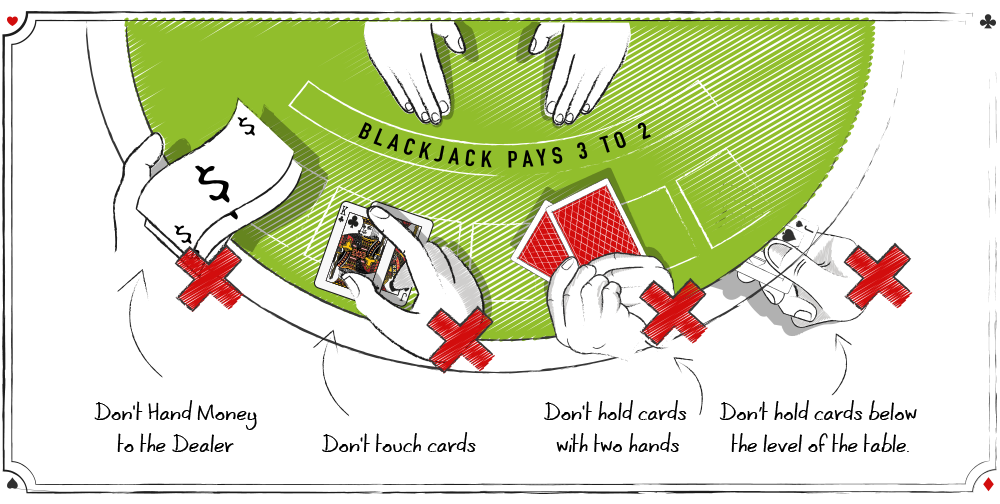
HANDING MONEY DIRECTLY TO THE DEALER
All cash transactions must be visible to the security cameras, so always place your cash on the layout outside of your betting spot, and then tell the dealer what denomination chips you want.
HOLDING THE CARDS WITH TWO HANDS
In games where the cards are dealt face down, usually single- and double-deck games, be sure to pick up the cards with one hand, not two.
TOUCHING THE CARDS
When four or more decks of cards are used, they are usually dealt face up to each player from a dealing shoe. The reason the cards are dealt face up is two-fold. First, it eliminates the potential for player cheating by either marking or switching the cards, and second, it speeds up the game, because the dealer can quickly announce the total of each player’s hand. There is no reason to touch the cards, so don’t do it.
REMOVING THE CARDS FROM THE TABLE
The cards in your hand must always be in full view of the dealer and the security cameras. Therefore, you should never, for example, hold them in your lap or below the level of the table.
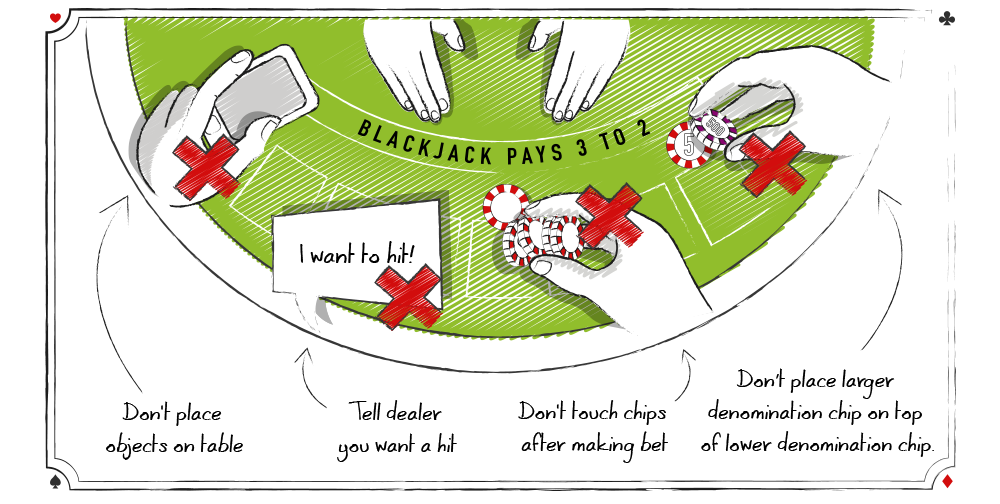
PLACING OBJECTS ON THE TABLE
Purses, wallets, bags, and other items should be placed on your person or next to you, except ladies’ purses, which should be held in the lap. It’s OK to have a drink on the table, but use the drink holders provided by the casino to avoid spilling anything on the layout.
TOUCHING YOUR CHIPS AFTER YOU’VE MADE YOUR BET AND THE CARDS ARE DEALT
Your original bet must stay on the layout untouched until it either wins, loses, or ties. Once the dealer starts dealing the cards, that’s your cue to not touch your chips until the hand is resolved.
TELLING THE DEALER THAT YOU WANT A “HIT.”
Saying, “Hit me” might be OK when playing blackjack with friends on the kitchen table, but in the casinos, it won’t fly. For security reasons, you must always use hand signals, not words to signify to the dealer how you want to play your hand. In many casinos an “eye in the sky” camera is used to record the hand gestures of players for security reasons. If your hand gestures do not match what you say, it can be considered duplicitous or deliberately misleading, so stick to hand signals not words.
PLACING A HIGHER DENOMINATION CHIP ON TOP OF A LOWER DENOMINATION CHIP IN YOUR BETTING SPOT
If you are wagering two or more different denomination chips, always place the higher denomination chip on the bottom of the stack.
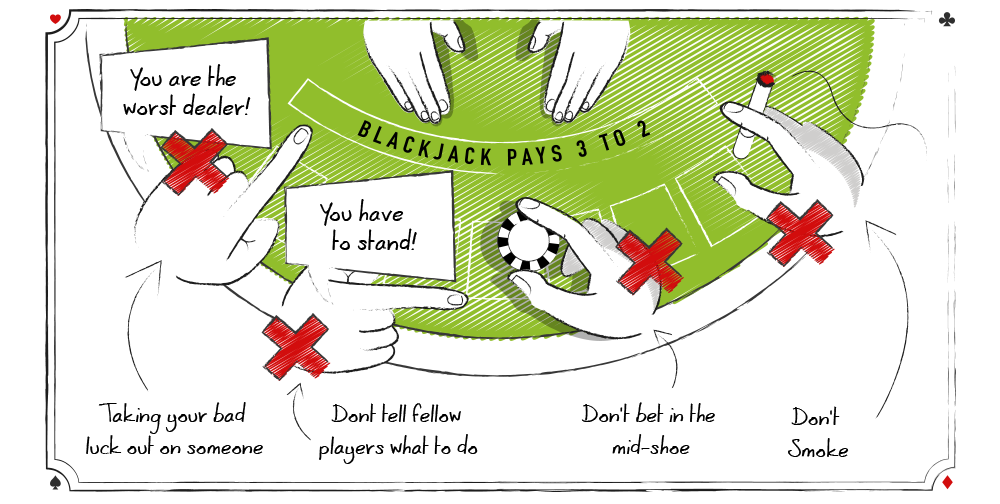
TAKING YOUR BAD LUCK OUT ON THE DEALER OR FELLOW PLAYERS
They are not the cause of your losing; most likely it’s just a bad run of cards, which happens to all blackjack players.
SITTING DOWN AND MAKING A BET IN THE MIDDLE OF A SHOE
In some casinos, this is forbidden and there will be a “No Mid-Shoe Entry” sign posted on the table. If there is no sign, it’s common courtesy to ask your fellow players if they mind that you join them. The reason is that most players have the irrational superstition that a new player entering in the middle of a shoe will change the flow of the cards on subsequent hands, causing them to lose.
TELLING YOUR FELLOW PLAYERS HOW TO PLAY THEIR HANDS
It’s their money and they have the right to play their hand any way they want to. However, if a fellow player asks you for advice, then it’s OK to offer it.
SMOKING
If you are a smoker, be courteous to your fellow players (and the dealer) by not blowing smoke in their direction. Sometimes casinos have designated no smoking tables, so before you light up, be sure it’s OK to do so.

Now that you’ve learned the rules of blackjack and table etiquette, let’s continue our journey by answering the question, “With all the choices of casino games, why play blackjack?”

WHY PLAY BLACKJACK
- Different mathematically than other casino games.
- A much better game for players, because of the favorable math.
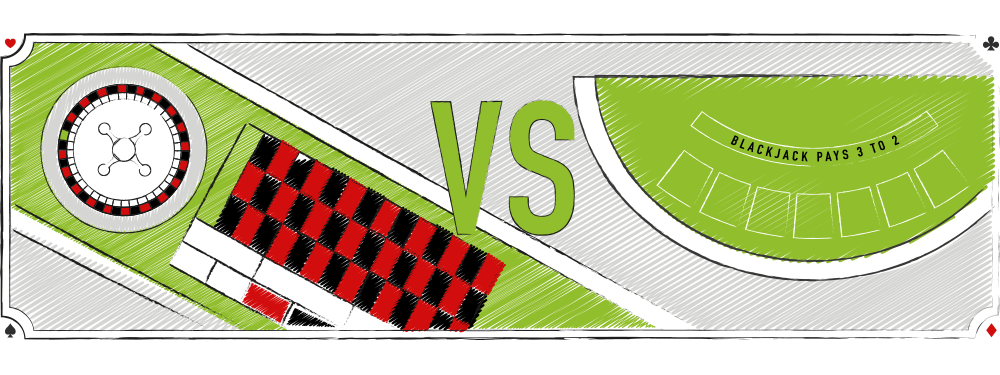
ROULETTE VS. BLACKJACK
Let me briefly explain why blackjack is “mathematically different” by comparing it to the American game of roulette. A typical American roulette wheel has 38 numbers – 1 through 36 plus 0 and 00. Suppose you place a bet on your lucky number 7. Mathematically you have a 1 in 38 chance that the roulette ball will land on 7. The odds are constant and do not change, regardless of the results of previous spins. The roulette ball, if you wish, has no memory. Mathematicians will say that roulette is a game of “independent trial processes,” because the outcome of each spin is independent of previous spins. Moreover, one characteristic of all casino games with “independent trial processes” is that, mathematically, assuming an honest game:
- There are no playing or wagering systems that can overcome the casino’s advantage.
- Players will always face a negative expectation (in the long run, they will lose more money than they will win).
A similar case can be made for many other casino games; namely, they are based on “independent trial processes” and, therefore, can’t be beaten in the long run. But the game of blackjack offers players a ray of hope. That’s because blackjack is a game of dependent trial processes, which makes it beatable. Let me explain by way of another example.

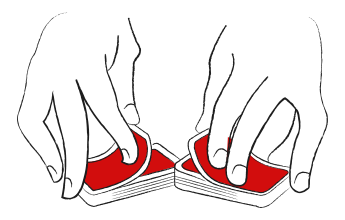 BLACKJACK DEPENDENCY
BLACKJACK DEPENDENCY
Suppose you sat down at a single-deck game and waited for the dealer to complete the shuffling of the cards before you made your first bet. What are the chances that you will be dealt a blackjack (two-card hand of ace and a ten-valued card)? Mathematically you have about a 1 in 21 chance of being dealt a blackjack. Now suppose during the play of the first round you noticed that four aces had been dealt. At the start of the second round, what is your chance of getting a blackjack? It’s zero because there aren’t any aces remaining in the unplayed cards, because they were all played in the previous round. In other words, your chances of winning a particular hand are quite dependent upon what cards were played in the previous rounds, meaning that blackjack is a game based on dependent trial processes. (That’s quite different than the roulette example.)

BLACKJACK IS A GAME OF SKILL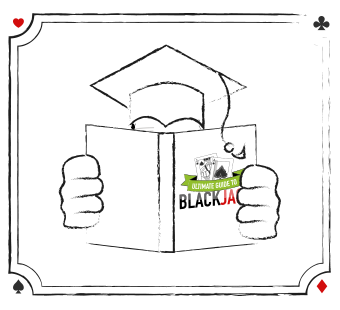
As you will learn in subsequent chapters, the mix of the previously played cards has a great influence on your chance of winning the next hand. Given this fact, it would seem logical that by knowing something about the composition of the cards in this previous mix, you could alter your bets and/or playing strategy to maximize your chances of winning the most money on the upcoming hand. This concept may seem complicated now but it will become much clearer in subsequent chapters. For now just remember these facts of blackjack:
- It is a game of skill, not solely chance.
- By using certain playing and betting techniques, it is possible to swing the odds in your favor. This is not possible for any other casino game.

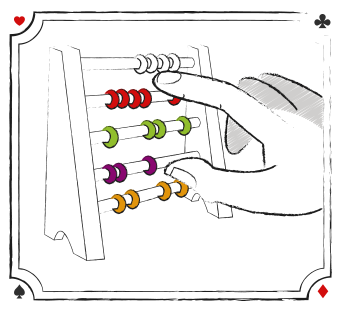 WHY PLAY BLACKJACK?
WHY PLAY BLACKJACK?
WHY, INDEED, BECAUSE:
- By learning a simple playing strategy, you can reduce the house edge to less than 1%
- By learning a specific betting technique based on the composition of the cards already played, it is possible to gain a mathematical advantage over the casino.

I’m ready to teach you these skills ... are you ready to learn them?
UNDERSTANDING THE CASINO'S EDGE
UNDERSTANDING THE CASINO EDGE
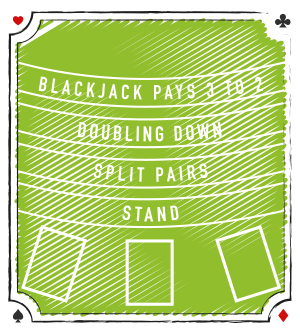 PLAYER ADVANTAGES
PLAYER ADVANTAGES
Fortunately, not all is equal when you play blackjack. Players have certain advantages and options that are not available to the dealer. They include:
- Receiving a 3 to 2 bonus payoff on a blackjack, whereas the dealer gets paid only at 1 to 1 on his winning blackjack.
- Being able to double their wager (i.e., doubling down) in favorable situations (like being dealt a two-card 11), whereas the dealer cannot double down.
- Being able to split pairs, whereas dealers cannot split.
- Players can stand on totals of 12-16, whereas a dealer must always hit a total of 16 or lower.
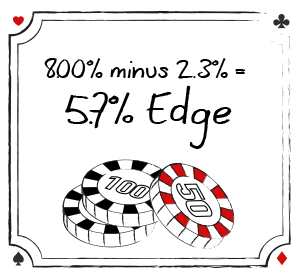
BONUS PAYOFF FOR A BLACKJACK
Obviously, the bonus payout on a blackjack hand is a rather advantageous perk, and the player doesn’t have to do anything to receive this extra money except get dealt a “natural” (blackjack hand), which, as previously mentioned, will occur about once in every 21 hands. This bonus 3 to 2 payout for the player cuts about 2.3% off of the initial 8% edge, leaving the house with a 5.7% edge.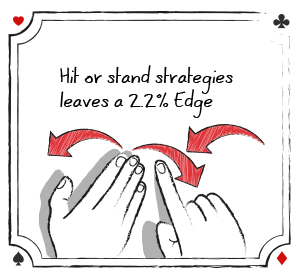
USING THE PROPER HITTING AND STANDING STRATEGIES
By knowing the proper hitting and standing blackjack playing strategy, a player can whittle another 3.5% from the house’s edge, leaving about a 2.2% edge. Remember that players can stand or hit as they wish, unlike the dealer who must always stand on 17-21 and hit 16 or less.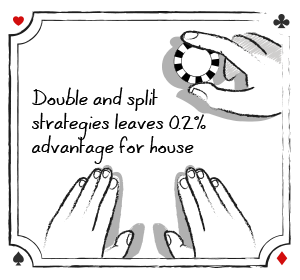
USING THE PROPER DOUBLING AND PAIR SPLITTING STRATEGIES
If you learn the right strategies for doubling down, you can whittle another 1.6% off of the house edge, and by knowing when to split pairs, you can take off another 0.4%. This leaves the house with about a 0.2% advantage in a single-deck game.

CUMULATIVE HOUSE ADVANTAGE

Hopefully you see how crucial correct standing, doubling, and splitting are toward your goal of minimizing the house edge. In fact, most of the time that you double or split will be when the dealer has a small upcard (2–6). The reason is that the dealer will bust about 40% of the time when she shows a small card, thus increasing your chances of winning the double down or split hands.

VALUE OF LEARNING THE CORRECT PLAYING STRATEGY
What follows is an example of how much money you can save by learning the correct playing strategies.Let’s assume an active player plays about 500 hours of blackjack per year with an average bet of $10. Let’s also assume the player averages 100 hands per hour. That means the player would have made $500,000 worth of bets during the year (100 hands per hour times 500 hours times $10 average bet). A player who mimics the dealer but gets 3 to 2 on blackjack hands would face a 5.7% house edge and stand to lose 5.7% of the $500,000 total wagered, or $28,500 (that’s his theoretical loss — he could lose more or less but on average the player would stand to lose $28,500 over the year). On the other hand, the basic strategist who knows the correct standing/doubling/splitting strategies is facing only a 0.2%–0.5% house edge depending on game conditions, and his theoretical loss is, therefore, only $1,000–$2,500 - a huge savings. Thus the basic strategy player, over the year, stands to gain at least $26,000 over the “mimic the dealer” player.

CAN A PLAYER DO BETTER? YES, BY DOING THE FOLLOWING:
- Playing in games with more favorable rules, especially in single- and double-deck games.
- Taking advantage of so-called “comps” (complimentaries) and special casino promotions.
- Learning the technique known as card counting.

THE HISTORY OF BLACKJACK
For several reasons, blackjack is the most popular casino card game in the world: 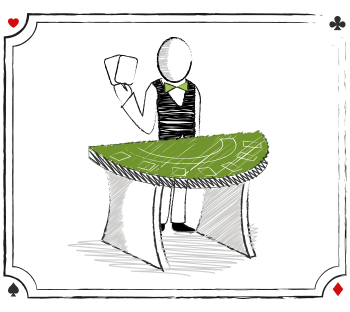
- It’s an easy game to play.
- There’s an element of skill involved.
- The mystique that surrounds card counting, which makes it possible to beat the game, keeps it in the public eye.
You may think that blackjack is the same today as it was 70 years ago, but that’s not so. There have been many subtle—and some major— changes to the game throughout its long and provocative history.

FRENCH PLAY VINGT-ET-UN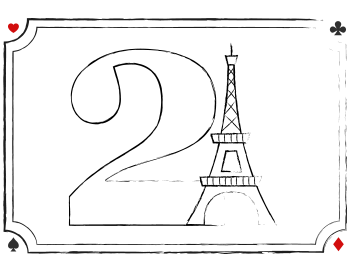
The origins of blackjack are not entirely clear. It is widely thought that its precursor “vingt-et-un” (pronounced van-tay-uhn, meaning 20 and one, or, simply, 21).
It began showing up in French casinos around 1700. The rules for vingt-et-un differ from blackjack as we know it. The game’s objective was to reach a “natural” with cards that total 21; however, players wagered after (not before) they received their first card. The dealer had the option to double everyone’s bet after looking at his initial card. Moreover, if the dealer got a natural, players would pay him triple. Nevertheless, there are some striking similarities with modern blackjack; namely, the hand-ranking system and the goal of trying to achieve 21.
ITALIANS PLAY SEVEN-AND-A-HALF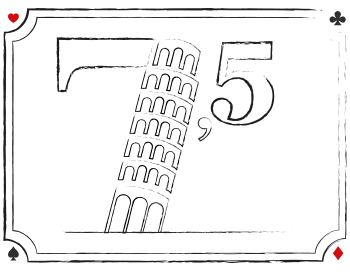
The Italians, meanwhile, were playing a game called “Seven-and-a-Half.”
THIS GAME:
- Used only face cards (counted as half a point)
- The 8s, 9s, and 10s (counted as one point)
- The king of diamonds was a wild card
The goal was to reach a hand totaling 7.5 points. A player automatically lost when his hand exceeded 7.5 points. It is widely believed that the blackjack term busted was derived from this game.
SPANIARDS PLAY ONE-AND-THIRTY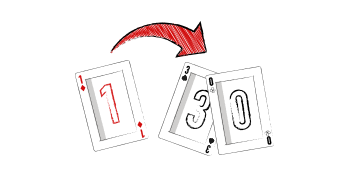
Another card game with similarities to blackjack was the Spanish game called “One-and-Thirty.” Played in Spain and Ireland in the 15th to 17th centuries, players received three cards. The objective was to get closest to 31 with three cards in the same suit.

CHANGE FROM “21” TO “BLACKJACK”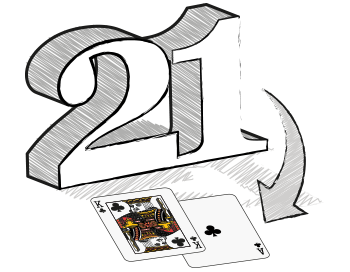
Vingt-et-un’s popularity spread throughout the world; however, the name of the game soon became corrupted: in England it became “Van John,” and in Australia, it was “pontoon.”
It is generally believed that the game made its way to America in the 1800s, but, initially, it was not popular in gambling houses. To encourage more players to try it, the casinos changed the rules and began paying a 10-to-1-bonus payout when a player’s initial two cards were either a jack of clubs or jack of spades, together with an ace of spades. As a result of this change, Americans called the game “blackjack.”

LEGALIZATION
Nevada legalized gambling in 1931, and, gradually, blackjack made its way into legalized casinos in Las Vegas. Casino owners didn’t know much about the math of the game, but what they did know was that they were making a lot of money dealing blackjack. Actually, they were making too much money because of this simple fact of the game: Players acted before the dealer, and if a player’s hand exceeded 21, the player’s bet automatically lost, regardless of what the dealer subsequently did. Casino managers smartly realized this was too big an edge for them, so they implemented some player-favorable rules. These included paying 3-to-2 on a blackjack, and allowing players to double down and split pairs. The dealer, on the other hand, had no options: she was required to hit on 16 or less, and stand on 17 through 21. These rule changes increased the popularity of blackjack, even though the math of the game remained a mystery, because many casino owners believed the game was simply too complicated to be mathematically analyzed. But that notion changed in 1956.
THE FOUR HORSEMEN TO THE RESCUE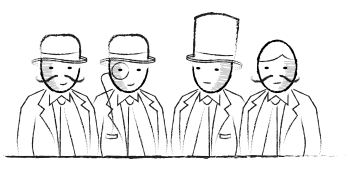
Roger Baldwin, Wilbert Cantey, Herbert Maisel, and James McDermott, often referred to in the literature as the “Four Horsemen of Aberdeen,” developed the first reasonably accurate basic playing strategy for blackjack.
What was impressive about their accomplishment was that it was done using only hand calculators (or, “adding machines”). These pioneers proved that blackjack offered the best odds of winning if players would follow a specific set of playing rules. Their work was published in 1956 in the Journal of the American Statistical Society, and then, a year later, in the book Playing Blackjack to Win. Although the Four Horsemen were not widely known by the general public, their peers recognized their accomplishments in 2008 by inducting them into the Blackjack Hall of Fame.

BLACKJACK IN THE 1940s-1960s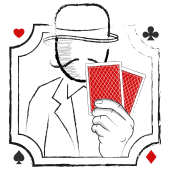
In the ’40s and ’50s, there were a few players who independently developed rudimentary counting systems to beat blackjack. The most notable was Jess Marcum, a nuclear physicist for the Rand Corporation, who quit his job to play professionally. However, it was Edward O. Thorp, in 1962, who developed and published the first powerful, winning card-counting system (the “Ten Count”). When Thorp’s book made the New York Times list of best-selling books, hysteria took hold in Las Vegas casinos, and, on April Fool’s Day 1964 - as if to perpetrate a cruel hoax on the public - casinos drastically changed the rules of blackjack:
- Players were restricted to only doubling down on two cards that totaled 11.
- A pair of aces could no longer be split.
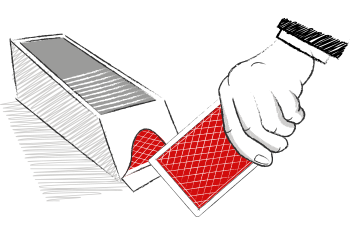
Players balked at these changes and stopped playing. The casinos had no choice but to revert back to the standard blackjack rules with one major, but important, change: instead of dealing a hand-held, single-deck game, many switched to a four-deck game that was dealt from a dealing shoe. The public accepted this change, and, for the first time, multiple-deck blackjack games became more or less the norm in casinos. Millions of players purchased Thorp’s book, thinking it contained an easy method to get rich. But, even though his Ten Count worked, the public found it too complicated, and many reverted to their old ways of playing. Thorp’s book led to an increase in the popularity of blackjack, which ironically led to soaring profits for casino owners.
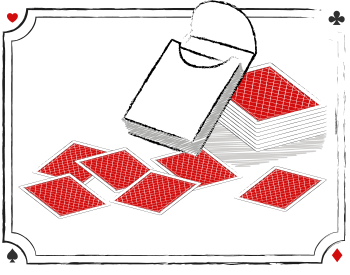 When blackjack was first introduced in casinos, it was dealt with a single deck of cards. The dealer manually shuffled the cards, and they were pitched to players face down. Players would pick up their cards to look at them, and then either tucked their cards under their chips, or scraped them on the felt towards themselves to indicate to the dealer if they wanted to stand or hit. Untied player blackjack hands received a 3-to-2 payoff. In the very early days, the dealers would always stand on soft 17, and players could double down on any two cards and after pair splitting. For many years, this game was often referred to as the “standard Las Vegas Strip blackjack game.” But times change, and so did the game of blackjack. In the subsequent chapters, I’ll explore some of these changes, not only to the way the game is played, but also to the techniques that have been developed that allow skilled players to beat the game.
When blackjack was first introduced in casinos, it was dealt with a single deck of cards. The dealer manually shuffled the cards, and they were pitched to players face down. Players would pick up their cards to look at them, and then either tucked their cards under their chips, or scraped them on the felt towards themselves to indicate to the dealer if they wanted to stand or hit. Untied player blackjack hands received a 3-to-2 payoff. In the very early days, the dealers would always stand on soft 17, and players could double down on any two cards and after pair splitting. For many years, this game was often referred to as the “standard Las Vegas Strip blackjack game.” But times change, and so did the game of blackjack. In the subsequent chapters, I’ll explore some of these changes, not only to the way the game is played, but also to the techniques that have been developed that allow skilled players to beat the game.
KEY TAKEAWAYS:
- The objective of blackjack is to beat the dealer’s hand either by having a total that exceeds the dealer’s total, or by not going over 21 when the dealer does.
- Players have several playing options that include surrender, pair splitting, doubling down, and hitting and standing.
- The casino game of blackjack has its procedures, codes of conduct, and playing strategies to ensure the security and integrity of the game, and so you won’t attract the ire of your fellow players, or the dealer.
- By using the basic playing strategy, it’s possible to reduce the house edge to less than 1% (rules dependent).
- Blackjack is a game of skill, not solely chance, and by using certain playing and betting techniques, it is possible to swing the odds in your favor. This is not possible for any other casino game.
- It is widely thought that the French game of Vingt-et-Un, played in French casinos around 1700, was the precursor of blackjack.
- When blackjack made its way to America in the 1800s, and to encourage more players to try the game, casino operators changed the rules and began paying a 10-to-1 bonus when a player’s initial two cards were either a club or spade jack, together with an ace of spades. This resulted in Americans’ calling the game “blackjack” rather than “21.”
- Blackjack began being offered in legalized casinos in Las Vegas in 1931 even though casino operators didn’t know much about the math of the game.
- Roger Baldwin, Wilbert Cantey, Herbert Maisel, and James McDermott, often referred to in the literature as the “Four Horsemen of Aberdeen,” developed the first reasonably accurate basic playing strategy for blackjack in the 1950s.
- In 1962, Dr. Edward O. Thorp developed and published the first powerful winning card-counting system known as the “Ten Count.”
- After Thorp’s book Beat the Dealer made the New York Times list of best-selling books, casinos changed the rules of blackjack. Players balked and stopped playing. Casinos had no choice but to revert back to the standard rules with one major change: many switched from a hand-held single-deck game to four-deck games dealt from a dealing shoe.
CHAPTER SUMMARY

TEST YOURSELF
Try answering the following questions based on the information in Chapter 1.
- The name of the game that is thought to be the precursor of blackjack is the French game Vingt-et-Un. True or False?
- The game of “21” became known as “blackjack” when what occurred?
- What did the “Four Horsemen of Aberdeen” accomplish?
- Who developed and published the first powerful winning card-counting system for blackjack?
- What was the name of this card-counting system, and the name of the book that made the New York Times list of best-selling books?
- What is the objective of blackjack?
- What major change occurred to the way blackjack was dealt in casinos following the publication of Beat the Dealer?
- In a single-deck, pitched game you are allowed to hold your cards with two hands. True or False?
- You want to make a $40 bet with one green chip ($25) and three red chips ($5 each). What’s the correct way to stack your chips in your betting spot?
- You can reduce the house edge in blackjack by betting more after losing several hands in a row. True or False?
Answers
- True.
- Casino operators began paying a 10-to-1 bonus payout when a player’s initial two cards were either a club or spade jack, together with an ace of spades. This resulted in Americans’ calling the game “blackjack” instead of “21.”
- They developed the first reasonably accurate basic playing strategy for blackjack in the 1950s.
- Dr. Edward O. Thorp.
- The Ten Count. The name of his best-selling book was Beat the Dealer.
- The objective of blackjack is to beat the dealer’s hand either by having a total that exceeds the dealer’s total, or by not going over 21 when the dealer does.
- Casinos started using four decks of cards dealt from a dealing shoe.
- False. You may hold the cards with only one hand, and the cards must be above the level of the table at all times.
- You stack your chips with the largest denomination chip(s) on the bottom ($25 green chip) and the smaller denomination chip(s) on top (three $5 red chips).
- False.


